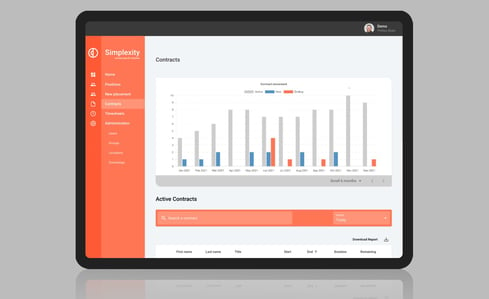The Risks of Misclassifying Workers in 2024
The benefits are clear: hiring contractors enables geographical flexibility, reduces payroll costs, and introduces adaptability into your workforce.
However, this strategy comes with a significant drawback: misclassification of workers. According to some estimates, up to 30% of American organisations have incorrectly categorised at least one worker as an independent contractor.
Hiring contractors carries an inherent risk of misclassification. In the US alone, nearly 10% of workers are misclassified, and 10–20% of businesses have done so at least once.
Misclassifying your workforce can lead to serious consequences, including fines, legal challenges, reputational damage, and unexpected financial liabilities. Keep reading for a comprehensive look at the impact of worker misclassification—and how to avoid it.
What Is Worker Misclassification?
Worker classification refers to how an organisation legally defines the status of its workforce under government regulations. While laws vary by country, most workers fall into one of two categories: employees or independent contractors.
Why does this classification matter? It’s simple, workers classified as employees are entitled to a broader range of workplace rights and benefits than independent contractors. When a worker who qualifies as an employee is misclassified as a contractor, they can be denied these benefits.
Depending on local laws, these benefits may include:
-
Minimum wage protections
-
Overtime pay
-
Paid time off (PTO)
-
Sick leave
-
Parental leave
-
Health insurance
-
Protection from unfair dismissal
Real-World Consequences of Misclassifying Workers
Misclassification is a serious issue, and recent headlines from the US illustrate just how costly it can be:
-
2020: Uber agreed to a $20 million settlement with drivers in California and Massachusetts over classification disputes
-
2023: Nike faced potential tax fines of $530 million for misclassifying temporary office workers
-
2022: A construction staffing firm in Virginia was ordered to pay $278,073 in owed wages to over 200 misclassified workers
-
2019: IT consulting firm Infosys was fined $800,000 for worker misclassification and tax fraud
The Tax Risks of Misclassification
In Australia, the primary tax-related risk around contingent workers is misclassification. If the Australian Taxation Office (ATO) or State Revenue Office deems that a contractor should have been classified as an employee, the hiring business may be liable for:
-
Failing to withhold Pay-As-You-Go (PAYG) taxes
-
Failing to pay superannuation
-
Failing to pay state payroll taxes (unless exemptions apply)
How to Correctly Classify Workers in 2024
Fines and penalties are more severe when misclassification is intentional, but even unintentional errors can lead to serious repercussions.
Here’s how to avoid them:
1. Understand Local Regulations
Classification rules vary by country, and often even between states. Stay informed of updates to legislation, as ignorance of new laws won’t excuse non-compliance.
2. Run Routine Worker Audits
The nature of working relationships can shift over time. A contractor arrangement may evolve into one that legally resembles direct employment. Regularly audit your contractor roster to ensure each worker’s classification remains accurate.
3. Get Expert Legal Advice
Partner with legal professionals who specialise in employment and tax laws in your jurisdiction. Their guidance can prevent costly misclassification errors.
4. Use Clear Contractor Agreements
While a contract doesn’t override the actual nature of a working relationship, strong independent contractor agreements help define boundaries and expectations from the outset.
5. Train Managers on Proper Oversight
A major factor in worker classification is the level of control exercised by the hiring organisation. Educating managers on appropriate oversight practices can help prevent inadvertently crossing into employer-like behaviour.
6. Correct Misclassifications Promptly
If you discover that a contractor has been misclassified, take steps to rectify it, particularly if the engagement will continue. Simply terminating the relationship does not resolve the issue. Transition the contractor to worker status and ensure all back payments, entitlements, and tax adjustments are made.
Accurately classifying your workforce protects your organisation from unnecessary risk and reinforces your reputation as a compliant, fair, and professional operator. In 2024 and beyond, getting this right is more important than ever.












_11zon%20(1).jpg?width=302&height=124&name=linkedin-sales-solutions-vqWWOnA6--M-unsplash%20(2)_11zon%20(1).jpg)






.png?width=300&name=Enterprise%20(21).png)